Text


It's time for Fossil Friday! Meet Cryptocleidus oxoniensis, a short-necked plesiosaur. Plesiosaurs were large marine reptiles that lived from the late Triassic to the end of the Cretaceous. The plesiosaurs had extensive modifications to the shoulder and pelvic girdles: these elements form large, flat sheets of bone, presumably for the attachment of swimming muscles. Cryptocleidus' trunk was very rigid and short, and the short tail could only function as a rudder, leaving the limbs as its main organ of propulsion.
Photos: © AMNH
Image 1: Cryptocleidus on display in the Museum.
Image 2: Photographic negative of the fossilized remains of Cryptocleidus, circa 1910.
#science#amnh#museum#fossil#nature#natural history#animals#paleontology#plesiosaur#cretaceous#triassic#cool animals#ancient animals#fossil friday
163 notes
·
View notes
Text
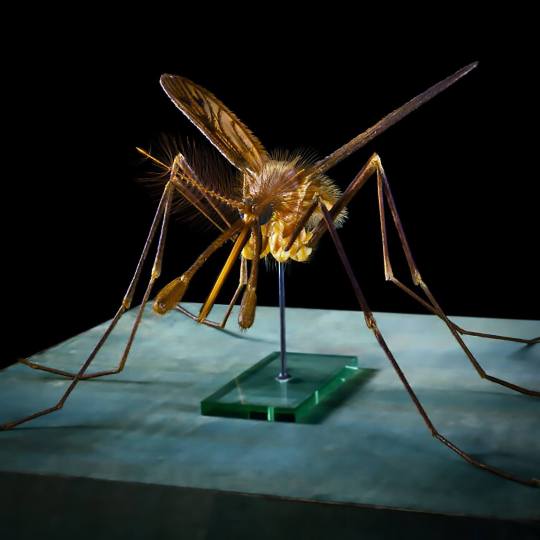
Have you ever noticed this gigantic mosquito at the Museum?
This isn’t a specimen of some monstrously-sized insect, but instead a scaled-up model of the tiny Anopheles maculipennis. This mosquito model is enlarged 47 times and debuted at the Museum in 1917 as part of an effort to educate the public about mosquito-borne illnesses like malaria and yellow fever.
Of the more than 3,500 species of mosquito known to science, the Anopheles mosquito is among a small handful responsible for malaria transmission in humans. While only females bite and transmit disease to humans, this model is a male.
At the time, it was a somewhat controversial idea that the mosquito, not poor sanitation, spread malaria. Since the model’s unveiling at the Museum, huge advances have been made in the global effort to combat and treat malaria as well as to educate the public about the disease.
Photo: © AMNH
184 notes
·
View notes
Text
By studying calcifying organisms, Leanne aims to better understand the impacts of human activity on marine ecosystems. Through her research, she hopes to influence policy that helps protect marine calcifiers in the future.
“Why is this important? The idea is that the more porous the shell, the weaker it is. Mussels need strong, robust shells to protect their inner soft organs—and that strong 3D structure is important for ecosystem function as habitat formers and storm defenses.
Currently, the changes seen in shell porosity are not large enough to influence the material properties, so we aren’t seeing weaker shells just yet. But with further warming in our oceans being predicted, this could potentially lead to even more porous shells, potentially impacting mussels’ function as habitat formers and storm defenses, as well as their ability to protect themselves from predation,” Melbourne explains.
Learn more about her research here.
#science#museum#amnh#natural history#nature#marine biology#marine ecosystem#mussels#bivalve#did you know#fact of the day#research#women in stem#climate change#conservation#earth month#earth day
216 notes
·
View notes
Text
Insects are critical to the survival of most other animals, including humans. But many insect species, from beetles to dragonflies to butterflies, are declining in abundance due in part to human activity. For Earth Month, Insectarium host Dr. Jessica L Ware gives tips on small things each of us can do to make a lasting impact and help insects thrive for years to come.
Learn more about insects with Museum Curator Jessica Ware in Insectarium on PBS Terra's YouTube channel.
#science#amnh#museum#natural history#nature#animals#insects#bugs#entomology#conservation#biodiversity#earth day#earth month
606 notes
·
View notes
Text
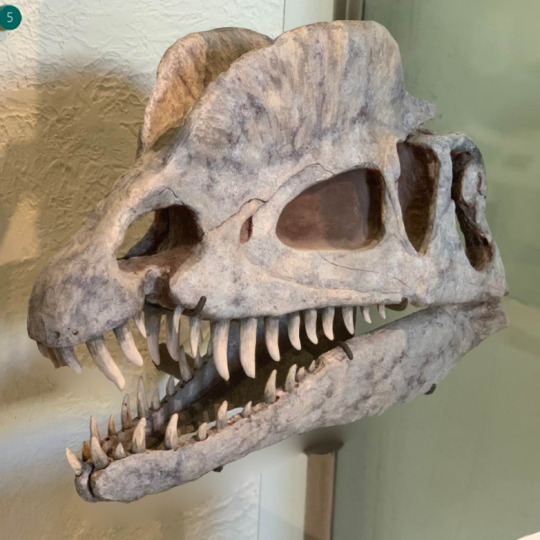
It’s Fossil Friday! Take a bite out of the weekend with Dilophosaurus wetherilli, a carnivorous dinosaur that lived some 194 million years ago during the Early Jurassic. This dino acquired its name, which means “double-crested reptile,” from the paired crests on its skull. They were possibly used for display. This specimen was found in 1942 at the Kayenta Formation in Tuba City, Arizona. You can see it in the Museum’s Hall of Saurischian Dinosaurs!
Photo: © AMNH
#science#amnh#museum#fossil#natural history#dinosaur#paleontology#jurassic#carnivores#did you know#fact of the day
623 notes
·
View notes
Text
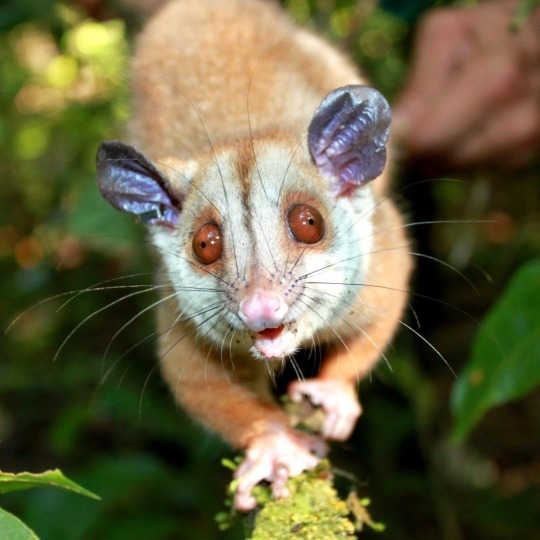
Which critter sleeps all day and snacks all night? Say “hello” to the brown-eared woolly opossum (Caluromys lanatus)! It’s a nocturnal marsupial that spends most of its time in the trees and can be found in parts of South America, including Colombia, Peru, and Venezuela. This omnivore has a varied diet that includes insects, birds, and even flower nectar!
Photo: hernanif, CC BY-NC 4.0, iNaturalist
#nature#natural history#animals#opossum#cool animals#cute animals#did you know#fact of the day#south america#mammals#animal kingdom#animal facts
355 notes
·
View notes
Text
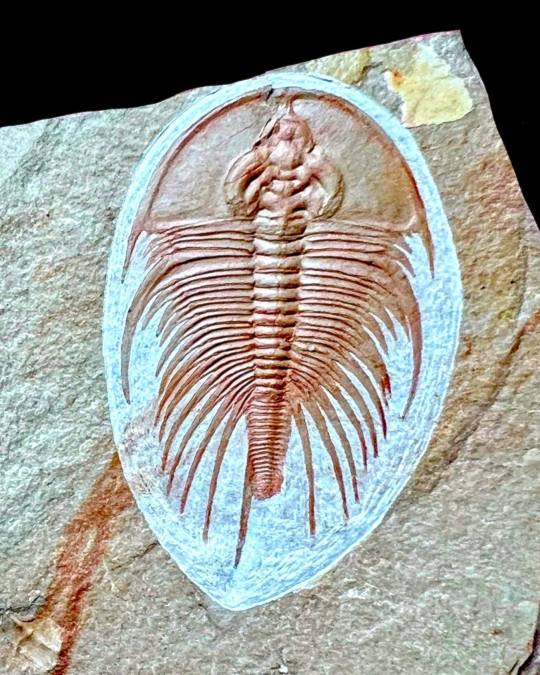
Welcome back to Trilobite Tuesday. By the time they arrived in Earth's early waters, trilobites already possessed a hard outer shell, sophisticated eyes, and even a basic respiratory system. However, this 520-million-year-old Olenellus, which features a multi-segmented opistothorax extending from its tail, is evidence of these arthropods’ more primitive, worm-like predecessors.
#science#amnh#museum#fossil#natural history#animals#paleontology#trilobite#did you know#fact of the day#ancient animals
364 notes
·
View notes
Text

Feast your eyes on the dazzling colors of the Himalayan Monal (Lophophorus impejanus). Males of this species use their iridescent feathers to attract mates. Found in the Himalayas, this bird inhabits high altitudes. In fact, it can be found at elevations of up to 16,000 ft (4,877 m) during the summer! Its distinctive hooked beak aids it in foraging for snacks like insects, seeds, and berries.
Photo: Hari K Patibanda, CC BY-NC 2.0, iNaturalist
#nature#natural history#animals#birds#ornithology#cool animals#did you know#fact of the day#himalayas#himalayan mountains#animal kingdom
870 notes
·
View notes
Text
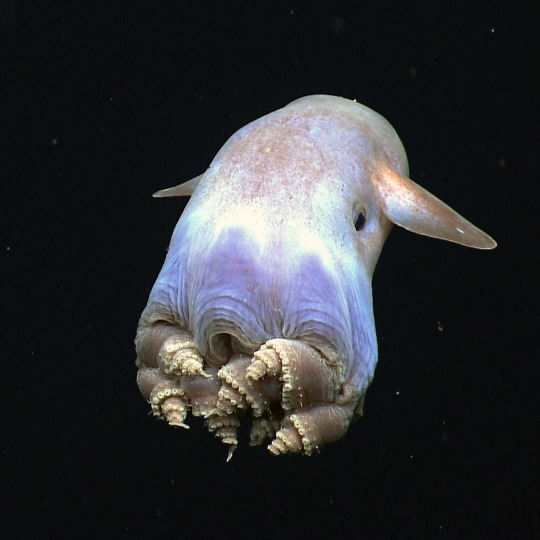
Cephalopod lovers, have you ever heard of the Dumbo octopus? 🐙 Members of the genus Grimpoteuthis, these critters are the deepest-living octopus known to science and can be found near the seafloor at depths of up to 13,000 ft (4,000 m). These adorable cephalopods flap their ear-like fins as they move through the water—a behavior that inspired scientists to name the genus Grimpoteuthis after Disney’s flying elephant. Unlike many other octopuses, Dumbo octopuses do not have ink sacs. Some scientists think it’s because they rarely encounter predators in their extremely remote, deep-sea habitats.
Photo: NOAA Okeanos Explorer, CC0, Wikimedia Commons
#science#nature#natural history#animals#cool animals#cephalopods#did you know#fact of the day#marine biology#ocean life#deep ocean#dumbo octopus#octopus
852 notes
·
View notes
Text
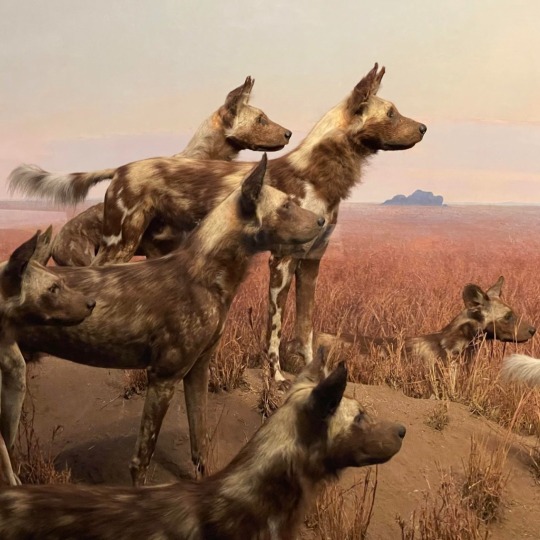
For today’s Exhibit of the Day, let’s check out the Hunting Dog Diorama! This scene, which takes place on the Serengeti Plain in northern Tanzania, depicts a group of these predatory dogs with their gaze fixed on a distant zebra. African hunting dogs (Lycaon pictus) are some of the continent’s most formidable predators: Thanks to their teamwork, these carnivores have a hunting success rate of more than 70 percent—far higher than that of lions or leopards.
As with all of the Museum’s habitat dioramas, this scene is a re-creation based on the meticulous observations of scientists in the field in the early twentieth century and the onsite sketches and photographs of the artists who accompanied them. You can see this diorama in the Museum’s Hall of African Mammals! Plan your visit.
Photo: © AMNH
#science#amnh#museum#nature#natural history#animals#did you know#fact of the day#animal kingdom#hunting dog#canids#wild dog#dioramas
325 notes
·
View notes
Text

This Fossil Friday, let’s get a leg up on the weekend with a colossal limb! This gigantic leg belonged to a sauropod dinosaur. A Museum preparator, standing on a ladder nearby, showcases its enormous size. Known for their long necks and tails, sauropods were the biggest of all dinosaurs and some of the largest animals to have ever walked the planet. One of the very largest, the huge Argentinosaurus, may have grown to a staggering weight of 90 tons (82,000 kg)!
Learn more about dinosaurs at the Museum! Plan your visit.
Photo: Image no. 335820 © AMNH Library
#science#amnh#museum#fossil#nature#dinosaur#natural history#paleontology#did you know#fact of the day#flashback friday#archives#sauropod#fossil friday
375 notes
·
View notes
Text
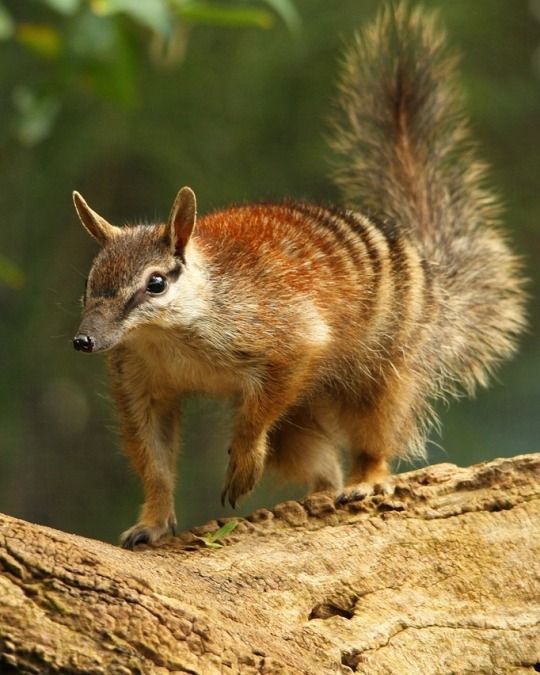
You might know about wombats, but what about numbats (Myrmecobius fasciatus)? These Australian marsupials are picky eaters with a taste for termites. Using their long tongues, these specialists can slurp down 20,000 of the insects in a single day! Unlike many mammals, the numbat’s mouth is filled with dull, peg-like teeth. But that doesn’t stop this critter, because it doesn’t chew its food anyway.
Photo: seashalia, CC0 Content, Pixabay
#science#nature#natural history#animals#did you know#fact of the day#animal king#numbat#australi#mammals#cool animal#cute animals
843 notes
·
View notes
Text


Did you catch the solar eclipse? This week, eclipse chasers gathered on the Museum’s Arthur Ross Terrace to view the celestial phenomenon. The next time the contiguous United States will see a total solar eclipse is in 2044. Thanks to all who joined us at the Museum!
Photos: © AMNH/ A. Keding
#science#amnh#museum#natural history#solar eclipse#eclipse#astronomy#museums#nyc#upper west side#uws#new york city
191 notes
·
View notes
Text
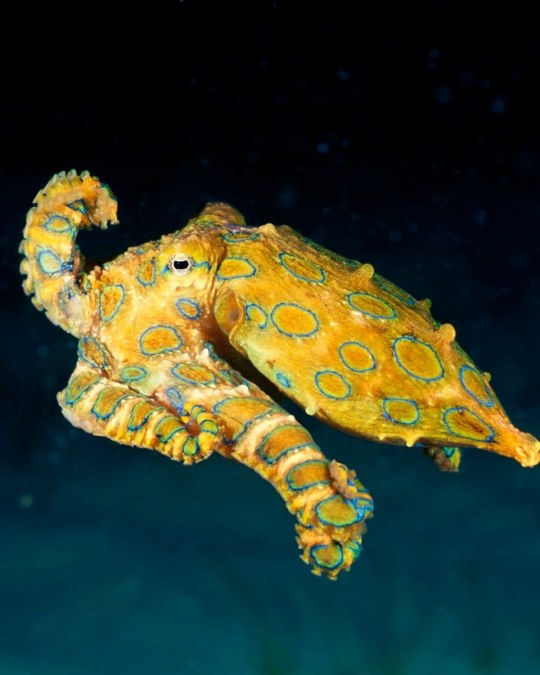
Did you know? Blue-ringed octopuses (members of the genus Hapalochlaena) are among the world’s deadliest cephalopods. Found in coral reefs in the Indian and Pacific oceans, these critters typically measure less than 8 in (20.3 cm) long. But, they pack a venomous bite that is potent enough to instantly paralyze, and even kill, a human being.
Photo: Angell Williams, CC BY 2.0, flickr
#science#nature#natural history#animals#fact of the day#did you know#octopus#blue ringed octopus#ocean life#marine biology#coral reef#cephalopods
705 notes
·
View notes
Text
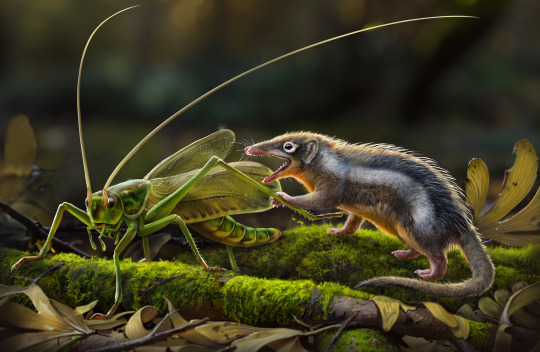
Research alert! New insights into mammalian tooth, jaw, and ear evolution, gleaned from analyzing fossils of two Jurassic-era mammal species from China, are reshaping how scientists think about early mammals. This research, led by scientists at the Museum and the Chinese Academy of Sciences, focuses on two new species of fossil mammals—Feredocodon chowi and Dianoconodon youngi—that offer new evidence about early mammalian evolution.
“Scientists have been trying to understand how the mammalian middle ear evolved since Darwin’s time,” said Jin Meng, a curator in the Museum’s Division of Paleontology and a corresponding author on both papers. “These new fossils bring to light a critical missing link and enrich our understanding of the gradual evolution of the mammalian middle ear.”
Check out our latest blog post to learn more!
Image: Chuang Zhao
#science#museum#fossil#nature#amnh#animals#natural history#ancient animals#jurassic#did you know#new research#resear#paleontology#mammals#evolution#mammalogy#fossils
417 notes
·
View notes
Text

☀️⚫🔭The eclipse is coming! Come celebrate at the Museum. On Monday, April 8, a solar eclipse will cross North America, passing over Mexico, the United States, and Canada.
Here in New York City, we’ll be able to see the Moon cover up to 90 percent of the Sun! The eclipse will start at 2:10 pm, reach maximum coverage at 3:25 pm, and end at 4:36 pm. Join us at the Museum before the eclipse for family-friendly educational activities and to receive your eclipse glasses, with Museum admission and while supplies last.
This archival image, snapped outside the Hayden Planetarium, shows Museum staff preparing to document a solar eclipse in 1940. During an expedition to Jacksonville, Florida in April of that year, a plane carrying pilots, photographers, reporters, and a Museum curator soared 16,200 ft (4,938 m) into the air to photograph this celestial phenomenon from the sky.
Photo: Image no. 292466 / © AMNH Library
#science#amnh#museum#natural history#nature#eclipse#total solar eclipse#solar eclipse#stem#tbt#archives#new york city#nyc#vintage nyc
137 notes
·
View notes
Text
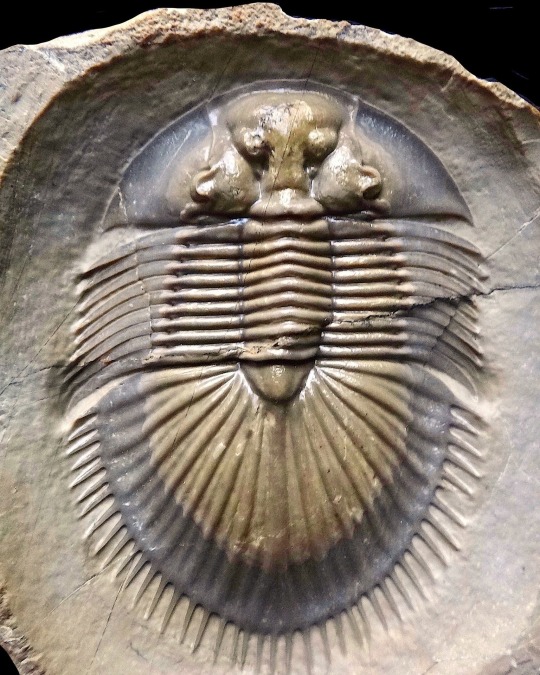
Welcome to Trilobite Tuesday! Have you ever wondered how trilobites are found in the field? Often, as was the case for this 3.1-in- (8-cm-) Thysanopeltis, rock after rock must be cracked by hand and carefully examined. The presence of a thin cross-section of calcite—like the crack still visible running through the middle of this critter’s body—indicates that a complete specimen might be buried within the stone matrix.
#science#amnh#museum#fossil#nature#natural history#paleontology#animals#trilobite#trilobite tuesday#did you know#fact of the day#ancient animals
549 notes
·
View notes